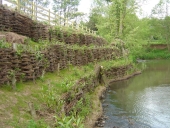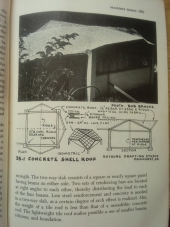posted 8 years ago
I think this would very much depend upon how you're looking to layer up using a digger and compact it, how much time you're looking to take to build it, what kind of dirt you're digging, and what the atmospheric conditions are like in the location.
You can't just put dirt on top of dirt, stick a couple of tons of digger weight on it and expect it to solidify into a squared off wall. What you'll have in that case is a bucket shaped divot in the middle of the bit that you wanted to be a wall. Looking into solidified rammed earth building historically, they'd use a series of molds, which were flat plates held a set distance apart by long bolts (2 or 3 at both top and bottom), to bring the wall up a section at a time. You'd tip the earth into those molds and use a manual packer to ram the earth down inside them, keep filling and packing until each section was full, then shift the plates up one bolt and continue the process. Ideally, you'd take the plates off and give each section time to dry out and strengthen before you added any more earth on top of it.
If you want to knock up something like that quickly then you may be able to do something similar using the right kind of dirt and the right kind of pallets. Build up walls, a layer at a time, with pallets which are largely covered top and bottom, and set them up so that you can drop sloppy dirt down between the batons so that it will fill the entire depth of the pallet, then "plaster" the inside/outside of your pallet frame as it dries out.
I originally thought that your "earth from a pond" was stuff that was from the bottom of a pond rather than earth that you're digging out to form a pond. Having ducks, and having to dig out the same pond on a regular basis since they keep filling it up, the kind of stuff that comes out of the bottom of *that* pond is absolutely great for forming solid walls - even if ours is on a hugel bed.

 1
1




 1
1




 1
1




 3
3




 2
2




























